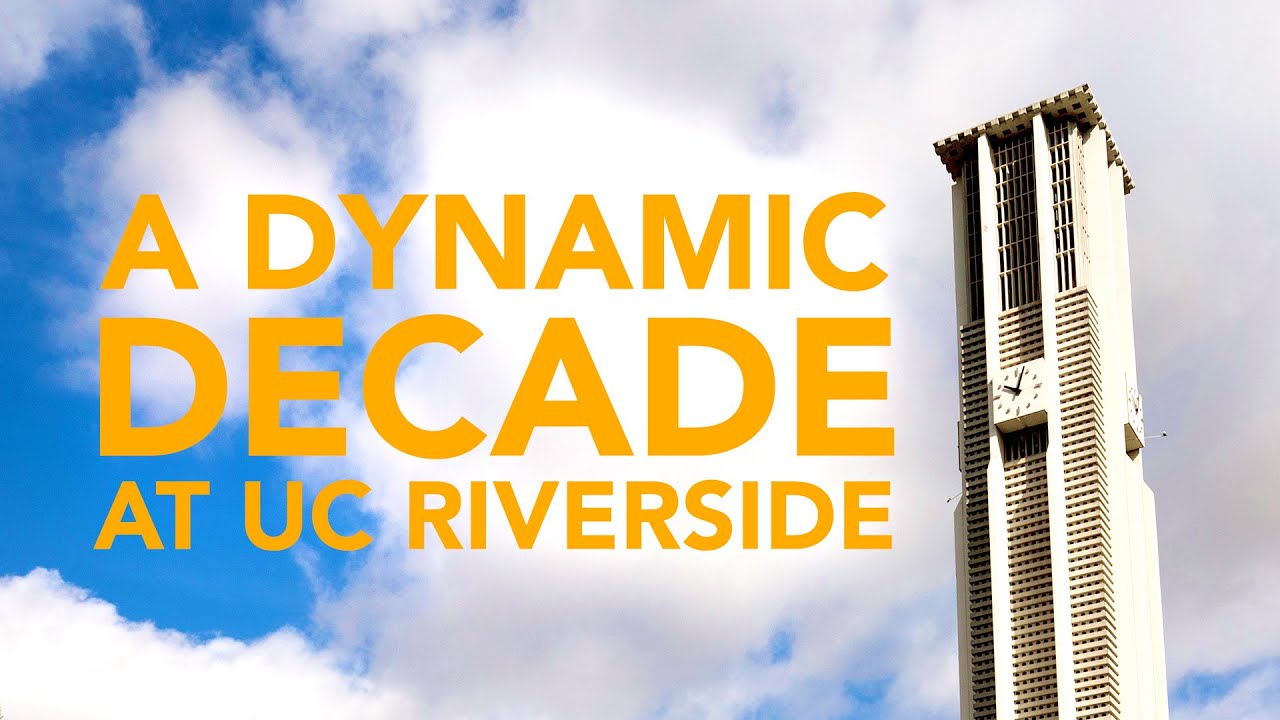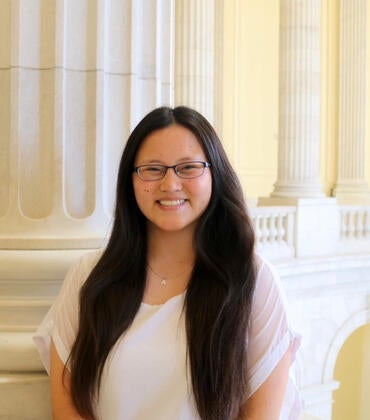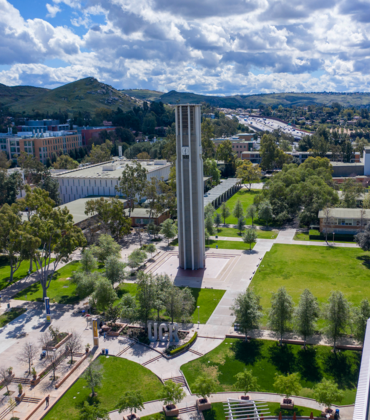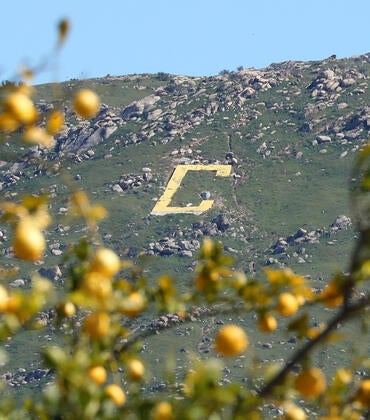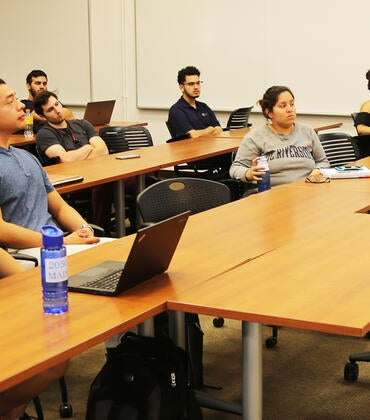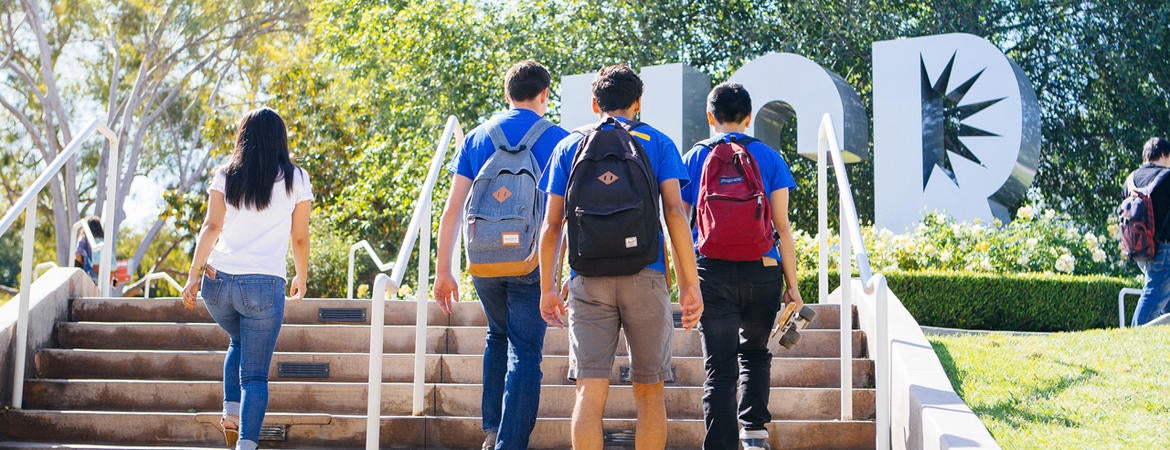
It’s likely the phrase “coming of age” has been used to frame previous decades in UC Riverside’s history. But it’s hard to imagine UCR has experienced greater forward momentum than during the 2010s.
It’s a decade during which UCR has become acknowledged as a national leader for innovation in student success, and even called a model for how higher education may reinvent itself.
The campus’ mission of lifting up all students — first-generation, underrepresented, low-income — remains a constant, even as it navigates unprecedented growth in its enrollment, the size of its faculty, the footprint of its campus, and the reach of its research enterprise.
Student success and enrollment
The campus has stretched from 20,746 students in 2010 to 25,548 in fall 2019. That represents almost a 20% jump in nine years for the 66-year-old university, and each successive year brings a new enrollment record. What’s more, about half of UCR’s students are first generation.
But the most impressive numbers speak to UCR’s performance in the midst of this fast-growing enrollment. UCR has gained renown for the success of its students, including by measures of graduation rates and social mobility, or how much more students will earn than their parents.
UCR graduates all of its students — underrepresented, or URM, and non-URM alike — at nearly identical rates. And its six-year graduation rates have climbed by an astounding 10 percentage points in only six years.
Building
UCR's building boom in the first decade of the millennium never stopped rolling. The last few years of the millennium's first decade saw the completion of the new CHASS INTS building, Genomics and Psychology buildings, a new HUB student center, and a Student Services building that includes a popular "One-Stop Shop" innovation.
In 2010, the School of Medicine Research building opened. It was followed by the Materials Science & Engineering Building in 2011, the first major building devoted to nanotechnology. Then came an expanded Student Recreation Center, Glen Mor 2 student housing, an Advanced Neuroimaging building, a new Environmental Health and Safety facility, and most recently - an architectural gem, the $150 million Multidisciplinary Research Building, or MRB, which will provide a collaborative approach to conducting research across disciplines.
The most ambitious construction is now underway, including the Dundee Residence and Glasgow Dining hall projects, set to open in fall 2020; the massive North District project, which will bring 6,500 new student beds, and the $50 million Student Success Center, which will seat 1,100 students, occupying the last available building space on the traditional campus quad.
Rankings
It is said that, in the past several years, UCR did not change to meet the national college rankings. Instead, the college rankings moved to meet UCR.
UCR moved into the top 30 universities in leading college rankings, including those from Forbes and Money magazines. It placed No. 2 for three consecutive years in the Washington Monthly rankings, which recognize social mobility among the list’s strongest measures.
At the dawn of the 2010s, former U.S. Secretary of Labor Robert Reich observed during a campus visit that UCR represents a brand of success the hallowed U.S. News & World Report rankings would not acknowledge. But by the close of the decade, UCR had made its mark even in U.S. News, becoming the fastest-rising university in the nation in its 2018 poll, and No. 1 for social mobility in 2019.
Then-Undersecretary of Education Ted Mitchell set the bar high during a 2016 talk on campus, saying: “I wish we could clone what is happening at UC Riverside and bring it to every college and university in the country.”
School of Medicine
The School of Medicine launched eight years ago with a hefty charge in the Inland Empire: to help offset its shortage of physicians, the gravest of its kind in the state.
The program had come far from its humble origins in 1974, when its first foray toward a medical school was a joint UCR/UCLA Program in Biomedical Sciences. Forty years later, 850 students were passing through the program, by then named the UCR/UCLA Thomas Haider Program in Biomedical Sciences.
Its success had already led to planning for a bigger eventuality: UCR’s own School of Medicine. In August 2013, the first class of 50 students had arrived. In 2016, Dr. Deborah Deas was appointed the Mark and Pam Rubin Dean of the School of Medicine.
On June 9, 2017, one day after receiving notice from the Liaison Committee on Medical Education of full accreditation, the School of Medicine graduated its first class, of 40 students. Significantly, all 40 students were matched for a residency program.
A goal for the school moving forward is to double its number of medical students from 250 to 500.
School of Public Policy
Established in 2012, the UCR School of Public Policy is one of only four public policy schools in the 10-campus University of California system.
UCR’s School of Public Policy has the only Master of Public Policy program offered by a major research university in inland Southern California, as well as the only undergraduate public policy program within the UC system.
"Solutions for the Region, Solutions for the World,” is the school’s motto. Anil Deolalikar has been the dean of the UCR School of Public Policy since 2013.
Chancellor
Even as UCR has become a national leader in student success, its chancellor has become a recognized voice for reinventing the measures by which higher education excellency is considered.
Kim Wilcox succeeded Tim White in 2013 to become UCR’s ninth chancellor, having served the previous eight years as provost at Michigan State University.
A first-generation college student, he advocates for a shift away from higher education benchmarks of excellence represented by Ivy League institutions, such as legacy admissions and gifts. He regularly opines in national forums and top-tier media outlets about creating an even playing field for all students.
Nobel Prize Winners
The addition of two Nobel laureates to the UCR faculty in fall 2018 is one of the most notable indicators of how the university’s research esteem has grown.
For Richard Schrock, it was a homecoming. He graduated with a bachelor’s degree in chemistry from UCR in 1967, won the 2005 Nobel Prize in chemistry while he was a faculty member at the Massachusetts Institute of Technology, or MIT. He was awarded the prize for the development of a catalyst for a reaction now used daily in the chemical industry for the efficient and more environmentally friendly production of pharmaceuticals, fuels, synthetic fibers, and many other products.
Within weeks of Schrock’s addition to the faculty, it was announced physicist Barry C. Barish, who won the 2017 Nobel Prize in physics for the discovery of gravitational waves, would join as well. He shared the Nobel Prize with fellow Caltech physicist Kip Thorne and MIT physicist Rainer Weiss.
“That we have two Nobel Prize winners joining our faculty puts us in rare company among international universities and speaks to the quality of our institution — its people, research, learning, and progress,” College of Natural and Agricultural Sciences Dean Kathryn Uhrich said at the time of the appointments.
Living the Promise
The university’s first comprehensive fundraising campaign, “Living the Promise: The Campaign for UC Riverside,” publicly launched in 2016. The $300 million campaign will conclude in 2020. To date, the campaign has raised more than $263 million toward its goal. These gifts will help students, support faculty members and their research and creative activities, build new infrastructure around campus, and fund endowed chairs, research, and university programs.
